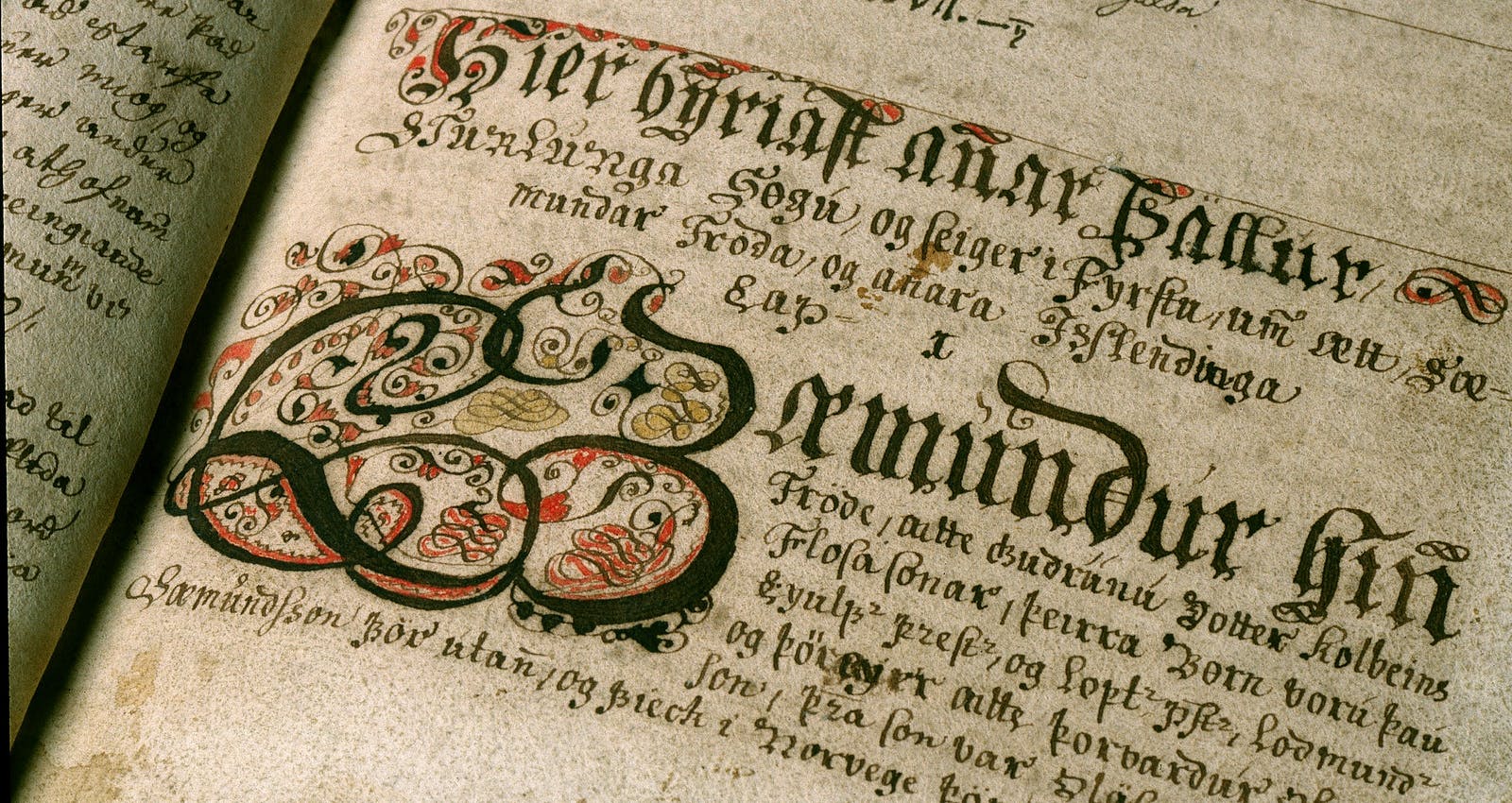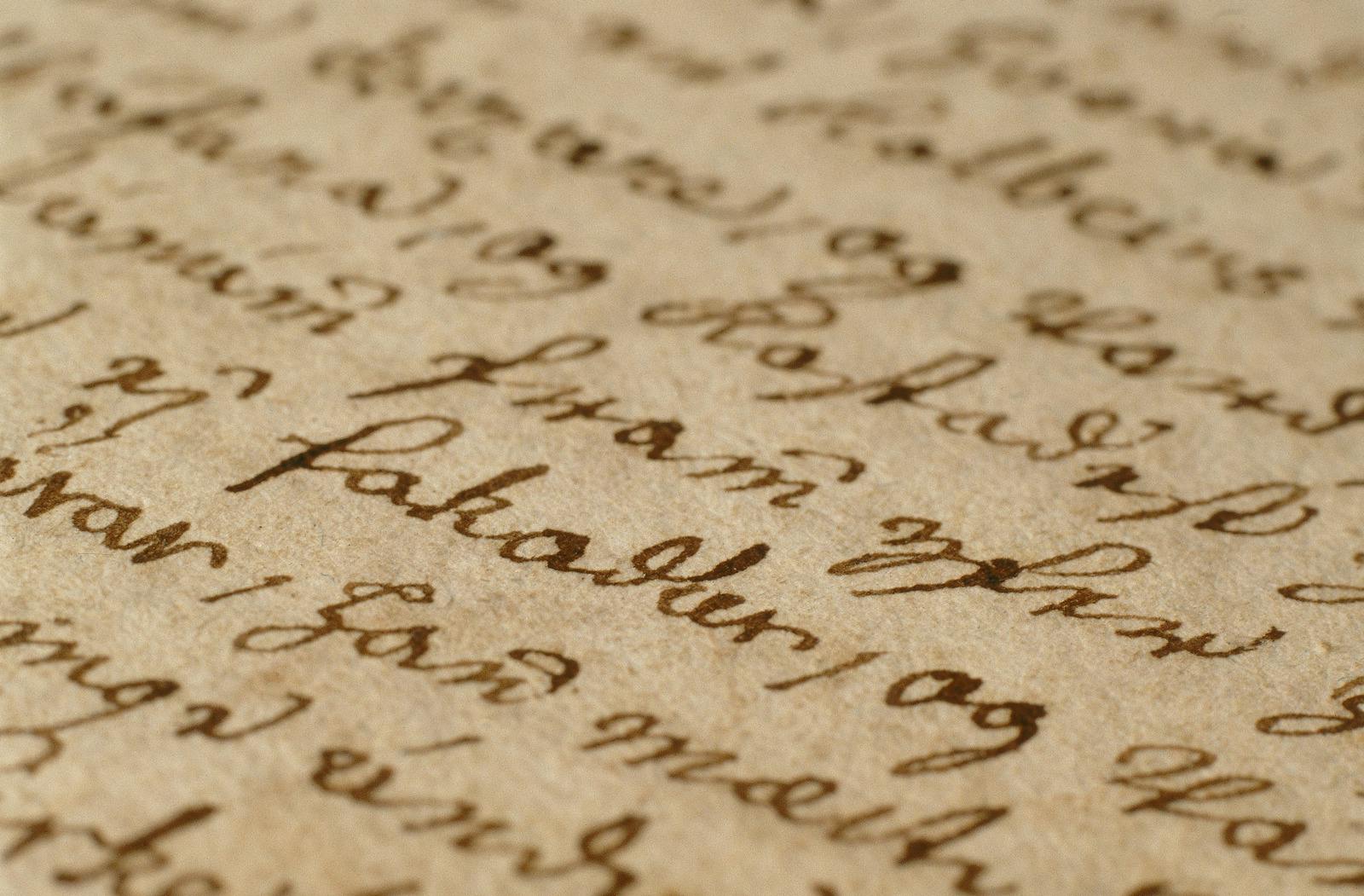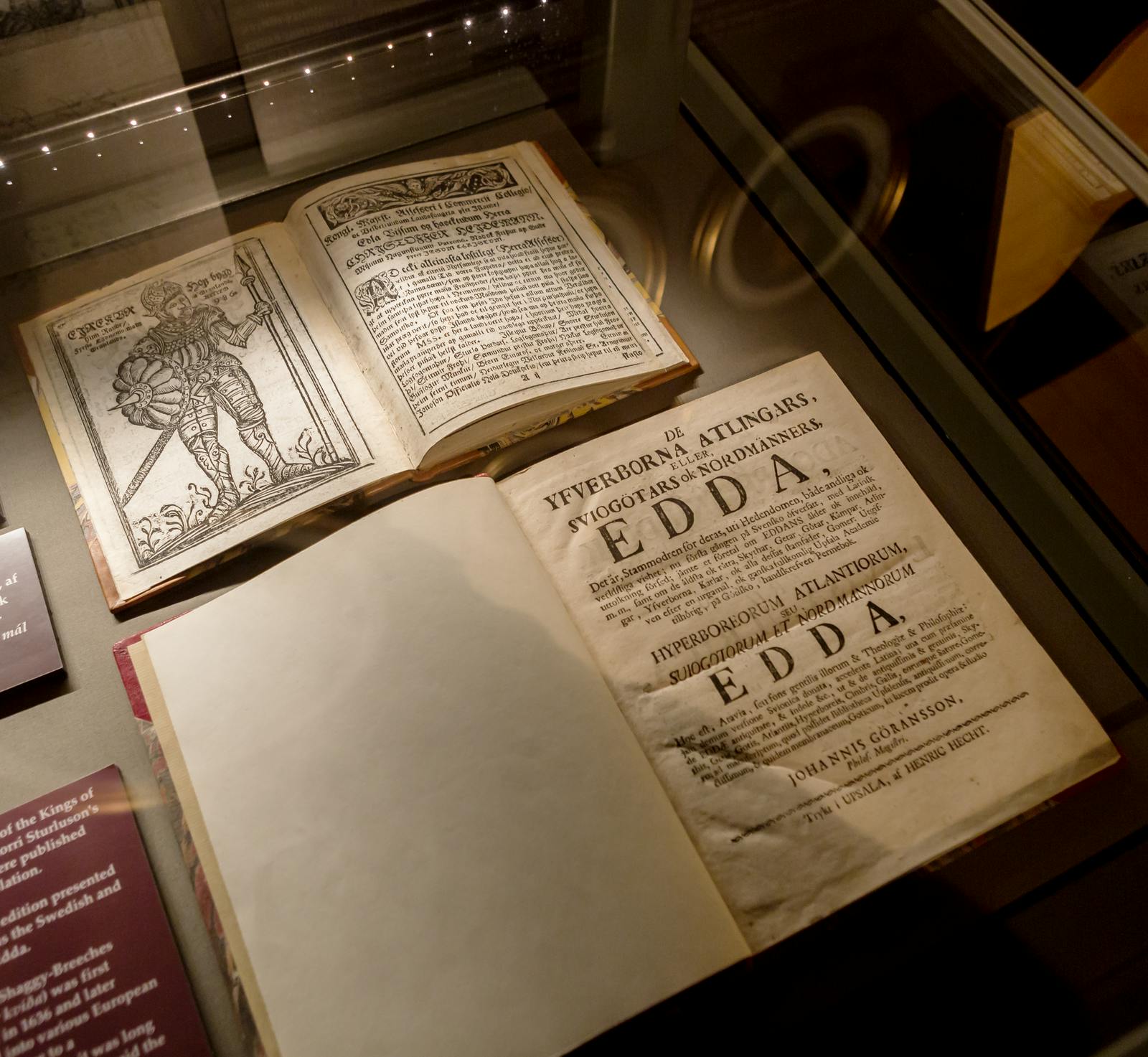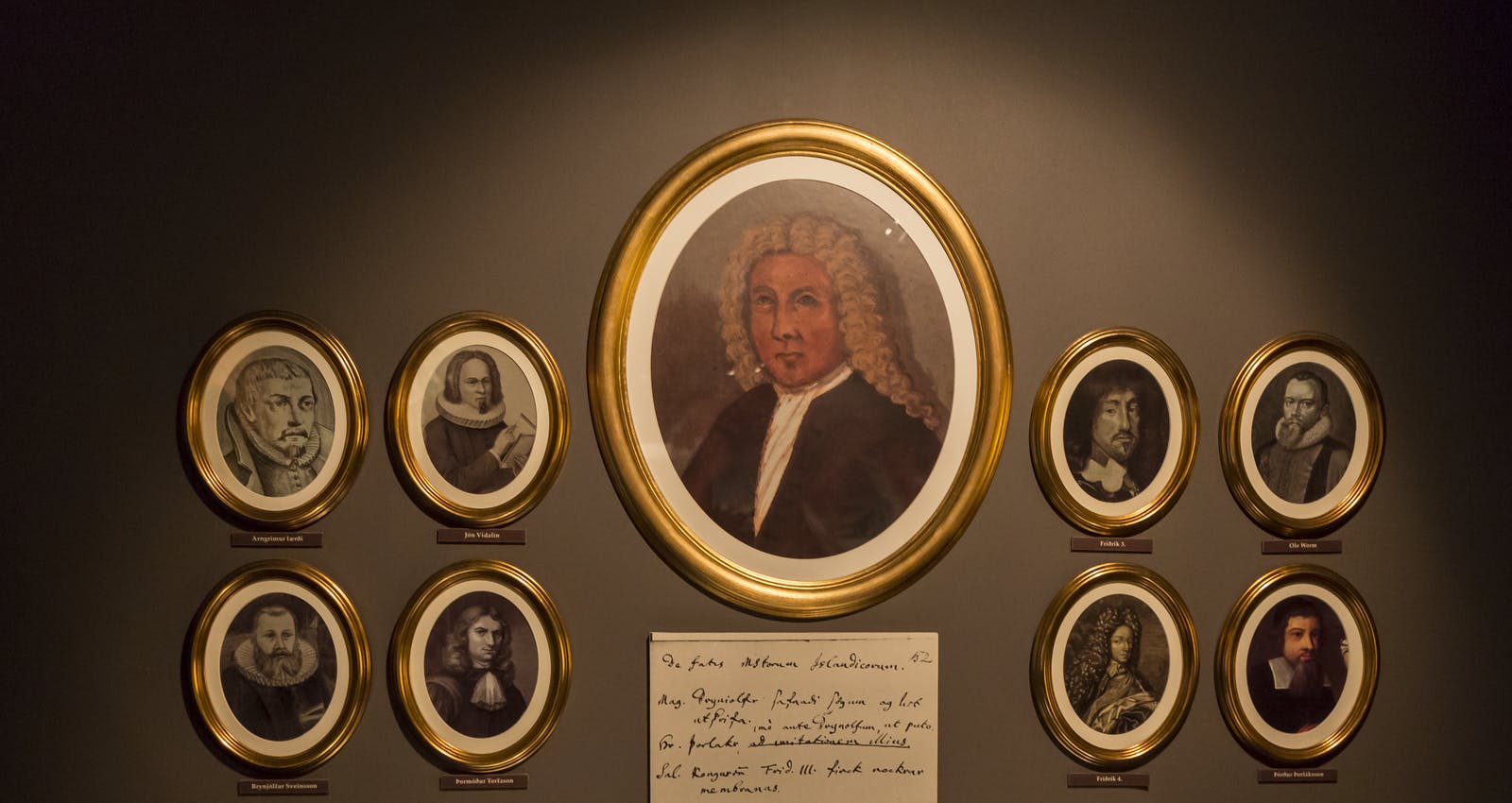
A History of the Icelandic Language
When Iceland was first settled, the language across Scandinavia at the time was Old Norse. It was a North Germanic language, spoken in Norway, Denmark, Sweden and, of course, Iceland until the 14th century. Many of today's Nordic languages, with the notable exceptions of languages such as Finnish and Sami, can trace their origins back to Old Norse.
So, how do we get from Old Norse to modern Icelandic? Here's a brief history of the Icelandic language if you're keen to find out. And be sure to check out Perlan's Timeline of Iceland exhibit for more on the country's past.
Old Norse and Old Icelandic
When the Norse settlers came to Iceland more than a thousand years ago, they brought with them a language we now know as Old Norse. There were two main dialects: Old East and Old West. The latter was spoken in Iceland and Norway, as well as other parts of the North Atlantic, such as the Faroes, Greenland, the Orkneys, Shetlands, and Hebrides.
When we trace the history of the Icelandic language, just as we find today, over time, variations started to be adopted. However, in a world without modern communications, changes were localized. If someone switched up a word or a phrase in an isolated place such as Iceland, it was hardly likely to be picked up by someone living in Norway. And so, the language in Iceland evolved and became what we know as Old Icelandic.
An oral tradition recorded by scribes

In the early days, Icelanders would have passed on important information and stories through the spoken word. Such oral traditions were commonplace across Europe, where it was far more unusual to be able to read and write than it is today. The oldest books in Iceland date from medieval times, like the famous 12th-century sagas. These are written in Old Icelandic.
Now, here's what's cool: many Icelanders today can read Old Icelandic and, with a bit of guesswork, figure out more or less what it means. The pronunciation and spelling have altered, of course, but compared to other European languages, there are remarkable similarities between words written centuries apart.
That wouldn't be the same with Old English and English, for instance. Try asking a Brit what this means if you want to test out the theory:
‘Hƿæt ƿē Gārde/na ingēar dagum þēod cyninga / þrym ge frunon’
(It's from the epic, pre-Norman Conquest poem Beowulf, and it means 'Listen! We of the Spear-Danes from days of yore have heard of the glory of the folk-kings.')
The importance of isolation
In the Middle Ages, other countries faced invasion and conquest from other nations. For example, the Norman Conquest explains why there are so many words of French origin in the English language today. Iceland's history was more stable, and thus, so was its language development. Even during the time of Danish rule, Icelandic was used for the written word, for example, in literature.
Mostly thanks to its remoteness from Denmark, linguistic differences remained. If you have to travel a long distance to find someone to speak and write a different language, you're much less likely to be influenced by it than if you share a border. The two separate languages didn't become one, and Icelandic was preserved.
A bit of a clear out

By the 16th century, Icelandic was considered significantly different from other Scandinavian languages. People started to refer to it as Íslenska. But not everyone was happy. Over the centuries, Icelandic had picked up a lot of loanwords from other languages such as Celtic, Danish and even Latin.
Icelandic language history also owes a lot to a poet named Eggert Ólafsson. He took it upon himself to fight for what he would define as pure Icelandic. His conservative approach won many followers, and by the early 19th century, a purist movement had gathered momentum. In Copenhagen, for instance, an Icelander-staffed journal called Fjölnir championed the cause, promoting Icelandic terms and literature.
The impact of sovereignty and independence
In 1918, Iceland was granted independence by Denmark. This was another key milestone in the history of Icelandic because it signalled that it was time for an overhaul of the language. In practice, this took the form of enforcing orthography standardizing spellings for Icelandic words.
Further protection came in 1951 when a University of Iceland dictionary committee set about publishing lists of government-approved new words. Fourteen years later, the Ministry of Education, Science and Culture set up an Icelandic language committee called the Íslensk málnefnd. It was their job to advise public authorities, broadcasters and private individuals on language matters.
Modern day Icelandic

Today, the Árni Magnússon Institute for Icelandic Studies comes up with new words in Icelandic for new technologies, while an Icelandic Naming Committee rules on what names newborns are allowed and which are not. And so, you see, the history of the Icelandic language doesn't end here.
As with any language, it will continue to evolve and change. Today's global society brings with it new challenges as we use the same websites, post on the same social media channels and watch the same streamed TV shows.
In the 21st century, more than ever, it's vital to protect less widely spoken languages such as Icelandic if we want them to survive.







